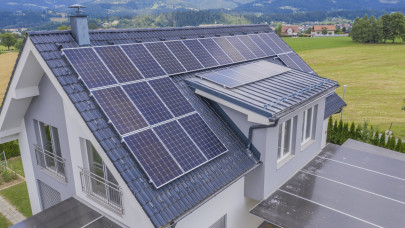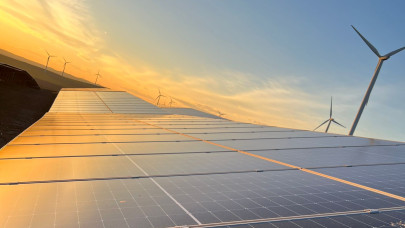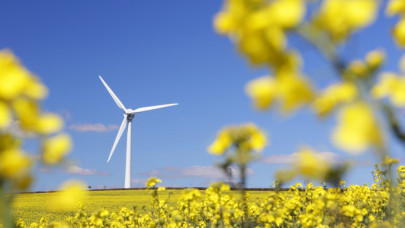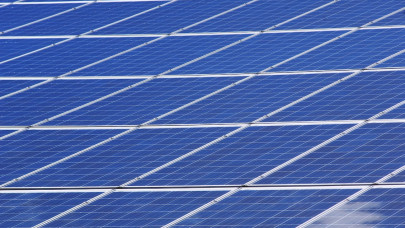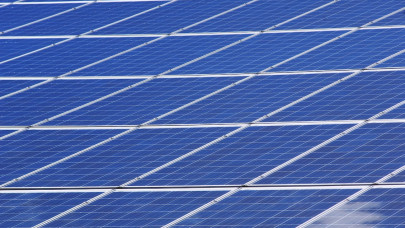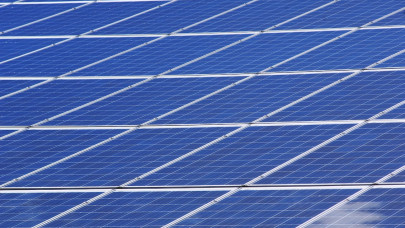But global ambitions to aggressively reduce carbon dioxide emissions, with energy consumption accounting for around 73% of total greenhouse gas emissions, have highlighted large gaps between existing technologies, infrastructure, and investments and the levels higher that will be needed in the immediate future to ensure the transition to a new energy paradigm.
In Romania, investments in renewable energy have intensified in recent years, but there is still a long way to go before reaching the commitment of the Integrated National Plan in the field of Energy and Climate Change 2021-2030 (PNIESC).
According to the latest ANRE data, Romania has a production capacity of 3 GW of wind energy and 1.5 GW of solar energy.
According to the current version of PNIESC, adopted in October 2021, Romania thus proposes that the share of energy from renewable sources reached 30.7% in the final gross energy consumption by 2030 by putting into operation new wind, photovoltaic, and hydropower plants, as well as by increasing the number of prosumers. Through the version of the Long-Term Strategy for the Reduction of Greenhouse Gas Emissions (STL) notified by Romania to the European Commission in April 2023, the share of energy from renewable sources in the final gross energy consumption at the level of 2030 increases to 36.3%. In total, through the PNIESC 2021-2030, Romania has proposed that, in the period 2021-2030, install additional capacities of 6.9 GW of energy production capacities from renewable sources.
The value of investments that Romania can achieve through co-financing from PNRR and the Modernization Fund exceeds 16 billion euros, in areas such as renewable energy, coal replacement, production and use of green hydrogen, nuclear power, high-efficiency cogeneration, biofuels, modernization of the energy infrastructure.
The PwC report analyzed the gaps that need to be overcome to build a reliable, affordable, and green energy system.
Currently, approximately 80% of primary energy demand is met by hydrocarbons such as oil, natural gas, and coal. The remaining 20% is provided by the electricity sector and 38% of this percentage is produced by technologies that do not emit CO2 - nuclear, hydro, solar, and wind.
In recent years, with the help of subsidy schemes, tax credits, and the decrease in the levelized cost of energy, the installation of electricity generation capacity from renewable sources (especially solar and wind) has increased greatly. Globally, between 2016 and 2021, 1,282 GW of renewable energy generation capacity was added to the power system, and the International Energy Agency (IEA) estimates that between 2022 and 2027, another 2,400 GW will be installed.
However, to reach net-zero emissions globally by 2050, installed renewable resource-based power generation capacity will need to increase to more than 27,000 GW. Building them at a faster rate than today is necessary not only to decarbonize current levels of electricity consumption but also to ensure that there are sufficient sources of primary energy for consumption.
All electricity generated by wind turbines or solar panels must reach the user. Network expansion and consolidation is an expensive and time-consuming endeavor. Over the past decade, an average of $300 billion a year has been invested globally, but according to the IEA, annual investment will need to rise to between $560 billion and $780 billion by 2030. But money alone doesn't solve the problem completely, as challenges to expanding networks also include long permitting periods, technical complexity, and lack of skilled labor and materials, which can contribute to increased costs. Governments have an essential role to play in setting policies and permitting regimes, reducing the time required for project approval and development, and providing investment incentives.
Electricity from renewable sources tends to be intermittent - the sun doesn't always shine and the wind doesn't always blow - while demand for electricity is relatively constant and predictable. Therefore, to have an orderly transition to a decarbonized grid, significant increases in electricity storage capacity, in the form of batteries or hydroelectric power pumping systems, will be needed.
In 2022, 16 GW of grid-scale battery storage was added globally, and according to the IEA, a 143-fold increase is needed by 2050 to meet net-zero targets.
Almost 20% of CO2 emissions globally are caused by four so-called "hard-to-eliminate" products, which represent a big challenge for electrification: steel, cement, ammonia, and plastic.
To stay on track to net zero by 2050, the IEA estimates that the world economy will need four times more critical minerals in 2030 than it produces in 2021. While existing and planned energy production capacity is projected to to meet global demand, the supply of several raw minerals remains insufficient and is therefore considered critical. These critical minerals, including lithium, cobalt, nickel, graphite, aluminum, copper, platinum group metals, and rare earth elements, are essential for the manufacture of electric vehicles and battery storage capacity. Therefore, the lack of these minerals is likely to have a significant impact on the pace and extent of the energy transition.
According to BloombergNEF, investments in the energy transition reached parity with those in hydrocarbons in 2022, both amounting to $1.1 trillion. However, substantially more excellent investment is needed to achieve the goals of the global energy transition, with estimates ranging from $4 trillion to $6 trillion per year. The magnitude of this challenge underlines the significant role of the financial sector in supporting the transition to a sustainable energy future and the need to develop and implement policies that encourage investment.


